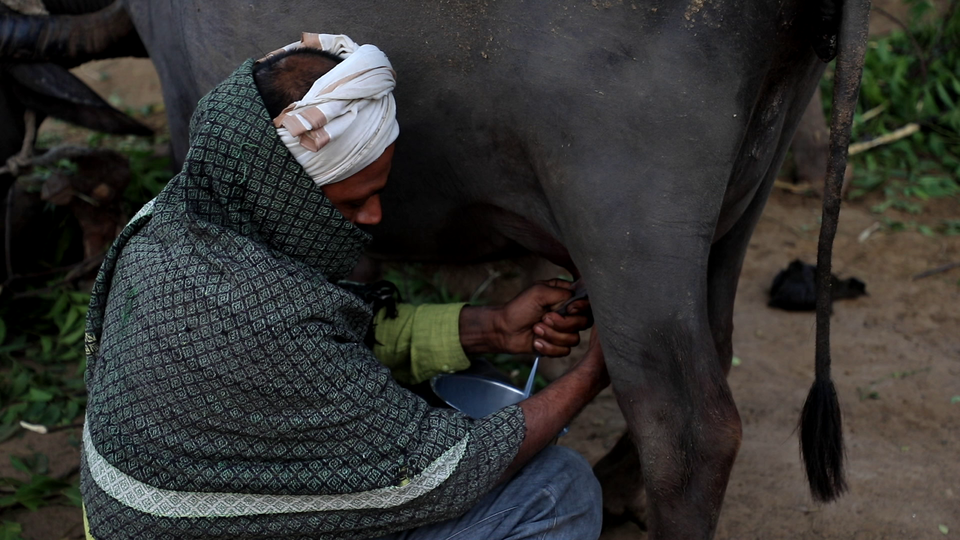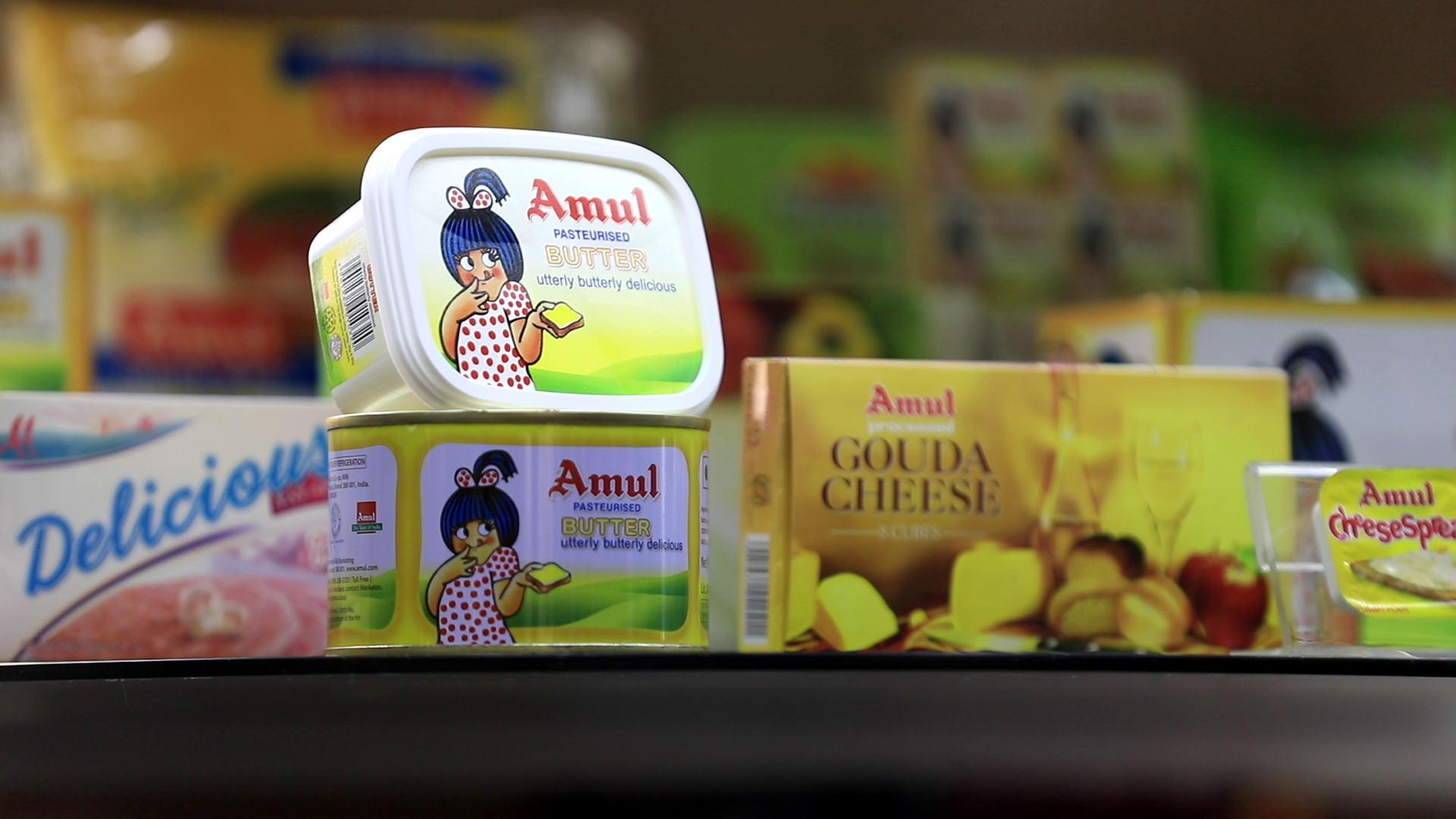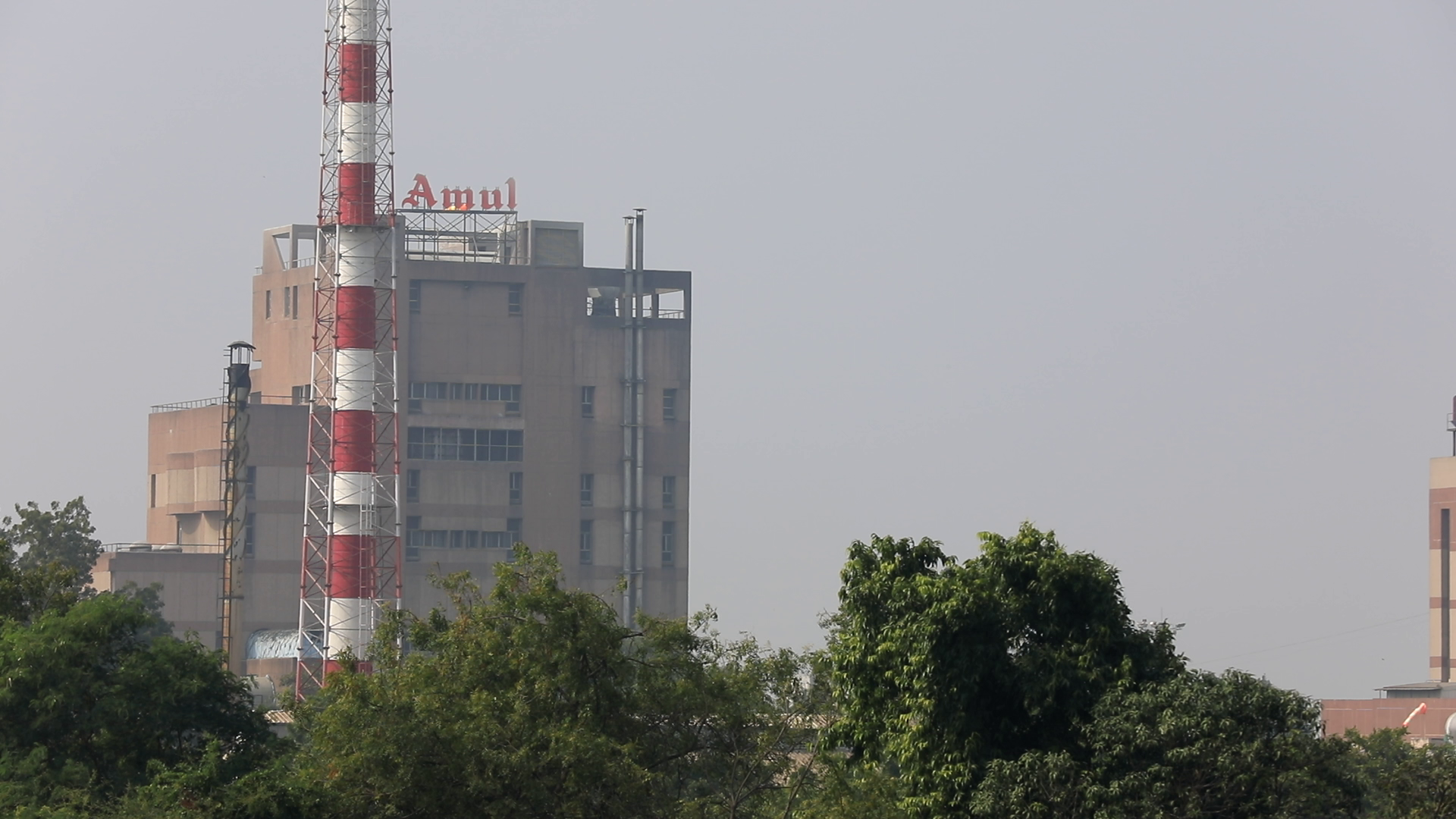“The dairy and livestock sectors will help farmers increase their income – it may not just double, it can go up three times”
Amul, founded 73 years ago, is an institution that belongs to 36 lakh farmer families of Gujarat, said its managing director RS Sodhi. The organisation has not just grown consistently over the years, it has also shared its expertise and technical knowledge with all the other cooperatives that were formed after Amul

Anand (Gujarat)
“When the entire country was talking about recession, Amul had registered an increase of 20 per cent. Whether you go to a city, or a village, an officer or a leader, everybody feels that Amul is their own institution, the institution belonging to the farmers of the country,” said Amul’s managing director RS Sodhi while talking about the largest cooperative milk institution in the country.
When asked how the farmers and cattle farmers in the country can increase their income, he said: “The dairy and the livestock are the only sectors which may help farmers increase their income — not just double, it may go up to three to four times – if they follow proper investment. Because India’s growing population needs protein and fat, for which milk and egg are the options, the increased demand will benefit these businesses.”
The story of the progress of Gujarat Cooperative Milk Marketing Federation Limited (Amul) — the country’s largest milk and milk products cooperative institution — the challenges and possibilities in the dairy sector in India, farmers‘ income and animal husbandry, RS Sodhi, the managing director of Amul spoke at length about these issues.

The story of Amul …
Amul, founded 73 years ago, is an institution belonging to 36 lakh farmer families of Gujarat. Why Amul came into being is interesting in itself. The farmers of Kheda district in Gujarat used to produce milk and supply it in the Mumbai market. The farmers, however, did not get a fair price. In winter, the prices used to be halved and the entire milk could not be sold by the farmers. So, these farmers decided to start their own milk business in 1946 and Amul was born. Farmers and villages kept on joining the cooperative.
Today, 18,500 villages across the country have cooperative milk societies and there are about 80 dairy plants having an annual turnover of Rs 50,000 crore. Today, Amul is the largest Fast Moving Consumer Goods (FMCG) company in the country, which is formed as an association of individuals.
The best thing about Amul is that the profit from value addition goes directly to the accounts of farmers. Suppose, one sells a litre of milk in cities like Delhi or Mumbai for Rs 50, about Rs 40 goes to the farmers’ account. Because Amul is a cooperative institution, the management and the shareholders are all farmers. In no other agricultural product (commodity) or place in the world, such a thing has occurred. This is an excellent example for the farmers to form their own organization and market their own goods to boost their sales and profits.

Question: In this cooperative model, 80 per cent of the money is reaching the farmers? Could you please elaborate on this?
Answer: In Gujarat, cow’s milk is sold for Rs 44 a litre. Say, it contains 3.5 per cent fat. The farmer gets Rs 31-32 and finally ends up earning 10 per cent through the price difference, which comes to Rs 3-4 in a year. So, the final cost comes to Rs 36-37. Then we provide them cattle feed, fodder, etc, which costs Rs 22-23 a kilo, but we give this to the farmers at the rate of Rs 19-20 because incomes in Amul or other cooperatives are handed over to the farmers by simply deducting the expenditure. We do not operate like private companies that cut 20-30 per cent profit in between.
Question: How has Amul’s journey been outside Gujarat? How did it benefit the farmers?
Answer: Outside Gujarat, Amul began with Rajasthan. Initially, the existing cooperative institutions of the state felt that we would challenge them but soon they understood that we were there for their betterment. Those dairies, which were not able to give a good price to the farmers, had already gone out of business. Amul has its set system and technology, which brought transparency and the farmers got good rates.
Initially, people would question us. They would ask us if there’s any milk in West Bengal. But, today, about one lakh litres of milk is provided there, that too at a good price. Similarly, Uttar Pradesh has a collection of 8 lakh litres. At what rate Amul is giving is not important. The big thing is that there is a new intervention.
If we take only 5 per cent of milk from any market and give a price of Rs 35, the other companies also have to pay the same price. It becomes like a benchmark. Amul may take milk from only 5 per cent of the farmers, but it also benefits the remaining 95. Anyway, healthy competition in the market will be beneficial to both, the farmers, as well as the consumers.

Question: Why couldn’t the rest of the cooperative milk institutions crack this model like Amul did?
Answer: For people, Amul is the Number 1 brand in India while the rest of the cooperatives are way behind. But I don’t believe in that. The rest of the institutions are doing very well in their respective areas. If you go to Karnataka, Nandini, and not Amul, is the number one brand. In Rajasthan, Saras holds the top position, while Verka rules in Punjab. They are behind Amul only because they came into existence 20-30 years after Amul. However, Nandini has already present in half of India. If these companies would start expanding to other states, their expenditure would increase and accordingly, they would be able to pay less to the farmers.
Amul is not only the first son but its also a big brother. The eldest brother must take care of the younger brothers. So, Amul shared its expertise, its technical knowledge and extended all possible help to these cooperatives that were formed after Amul. There is no rivalry among cooperatives. We don’t annihilate our competition. We help our competitors. We help them propagate.
Question: How does a cooperative function?
Answer: The aim of cooperatives is to provide the market. If a farmer has one or two cows and buffaloes and he is selling the milk directly to the market, he does not need a cooperative. But those living in remote areas face problems where there is no market. To provide them with a market is the prerogative of a cooperative by bringing all the farmers on a common platform. If they manage to do this on their own, even better.

Question: So, can we safely say that the future of farmers is in milk cooperatives?
Answer: See, most of the farmers in India hardly earn Rs 6,000-7,000 per annum. Out of this, 48 per cent comes from cultivation, 12-14 per cent comes from animal husbandry and remaining from wages etc. But if you talk about growth, the agriculture sector has registered a growth of 3 per cent per year in the past 10 years, while the animal husbandry department has grown by 14 per cent ever year. The reason is that the income of the people living in urban India is increasing. The demand for milk and egg is rising as fat is a major source of protein. So, the farmers have to produce things that are in demand. If you produce paddy and wheat, you’d simply be filling the FCI (Food Corporation of India) godowns or pay MSP (Minimum Support Price) to the government. This is not the case when it comes to eggs because there is a demand for eggs. If rural India has to increase its income, animal husbandry is the only sector where they will reap profits on their investment.
Animal husbanday’s share in India’s total agricultural GDP (gross domestic product) is 30 per cent, which is about Rs 10 lakh crore. Out of this, Rs 8 lakh crore is generated by the dairy sector alone.
While paddy, wheat and sugarcane bring in a composite income of only around Rs 6 lakh crore, if you look at the budget of the state governments and the Centre, 90-95 per cent share is of agriculture. The sector, which is contributing 30 per cent to the GDP, is being given only 5 to 10 per cent resources? This is why there is a need to rethink our policies based on this perspective.
Around 80-90 per cent of farmers associated with milk business are either landless and have small landholdings. So, we have figure out if we need to pump more money in saturated areas like paddy or wheat or promote the upcoming field of animal husbandry.

Question: We have been number one in terms of milk production for the past several years. What should be done to provide fair prices to farmers for the milk and how can we avoid price crashes like in New Zealand?
Answer: Around 10 crore households in India are dependent on animal husbandry whereas in New Zealand, 10,000 farmers are into milk business. While New Zealand produces 20-22 metric tonnes of milk, while India produces 180 metric tonnes. However, 95 per cent of New Zealand’s milk is surplus and needs a market.
If we are going to import cheaper milk from any country, the farmers in India will have to give up on animal husbandry. Then, from where will our 130-140 crore population – which is going to go up to one billion 70 crore by 2050 — get about 530 million tonnes of its milk requirement from? You may import from New Zealand, which produces 20-22 metric tonnes of milk, and the production might go up, the rate would be double.
Do you remember what happened in the case of edible oil? Till 1990, we were self-reliant and importing only 5-10 per cent from outside. Today, we are importing 70 per cent and spending about Rs 70,000 crore on it. The same is the case for crude oil.
Question: The day milk is going to be put out in the open market, it would surpass the edible and crude oil. Do you have that much foreign exchange? And, above all, what will happen to those 10 crore families for whom it’s a source of livelihood?
Answer: India is the largest market in the world. Those who are going to get a share of this market would reap enormous gains, but at the cost of the Indian economy. This is why we opposed the Regional Comprehensive Economic Partnership (RCEP) agreement and the farmers were also concerned about the farmers.

Question: Many cooperative institutions were subjected to interference by government leaders. What is the strategy of Amul?
Answer: The reason for Amul’s success is that we were fortunate to have had a dedicated and visionary leadership for 73 years. We had Tribhuvandas Patel and to Dr Varghese Kurien and we have done well is because of these two dignitaries.
Our organization, which has been doing well, belongs to 36 lakh farmers. When India suffered a slowdown, we still managed to clock a growth of 20 per cent. So, any political party, whether at the Centre or in the states, may not think of hampering or interfering our work. The officials support us too.
Whether you go to a city, or a village, an officer or a leader, everybody feels that Amul is their own institution. It’s an institution of the farmers … of the country. Our organization does not belong to some billionaire living in Mumbai’s Peddar Road or the UK, so everyone lends support.
Question: What are the possibilities in the dairy industry? How can small farmers make profits?
Answer: Dairy can double farmers’ income. The government currently spends Rs 75,000 towards subsidy on chemical fertilizers. If the equal subsidy is directed towards animal husbandry, it can even increase the farmers’ income by up to four times.
A subsidy is like crutches which do not allow one to stand on one’s feet after a while. The government needs to provide the farmers with one-time help so that they can stand on his feet. We need to create a complete infrastructure and offer it to the farmers. Instead of subsidy on every crop, if the farmer is given a cow or a buffalo, he would not need help every year and substantiate his income with that.

Question: What are the challenges faced by dairy farmers in India?
Answer: There are currently about 30 crore cows and buffaloes in India. The country does not need any more cattle now. We are Number 1 in terms of milk production. Today we need 180 metric tonnes milk; tomorrow (by 2050), we might need 540 metric tonnes. What we have to do here is to increase the productivity of animals, so that we get more milk per animal.
The animal husbandry sector has not received much attention in India. Animals are fed upon scraps from the field and home. This has to change.
We have to ensure three times more milk from the same buffalo or cow. The Dairy Development Board in the country has done a lot of work in the field of “better feeding and better breeding” under the National Dairy Plan. More efforts are to be made.
Our second biggest challenge is the second generation of farmers, which is literate and does not want to do farming or join the dairy business. Those who are educated go to the cities and look out for Rs 10-12,000 jobs.
So, we have to make agriculture and dairying modern, appealing and contemporary so that it’s appealing to the younger generation and they consider it to be a good startup and prefer working here rather than taking up odd jobs in cities.
We have to bring about a change in mindset. We will have to modernize the dairy sector. Most of them don’t like to milk these cows manually. We have to provide them with machines, attractive sheds and computerized machines. We will have to invest in these machines to make it appealing to people, especially youngsters in villages. I have noticed that many educated youths have ventured into this sector in the past few years. If a graduate student starts a dairy farm with 30 cows and buffaloes after taking a loan of Rs 10-15 lakh, he will easily earn Rs 50-60,000 every month. This will increase employment opportunities in villages because if one lakh litres of milk is produced in the organised sector, 6,000 job opportunities would be created – 5,000 in villages and 1,000 in cities.
We estimate that in the next 10 years, 20 crore litres of milk will come from the organised sector and one crore 20 lakh people will be provided employment. It is just that the policymakers need to look towards providing the necessary resources.

